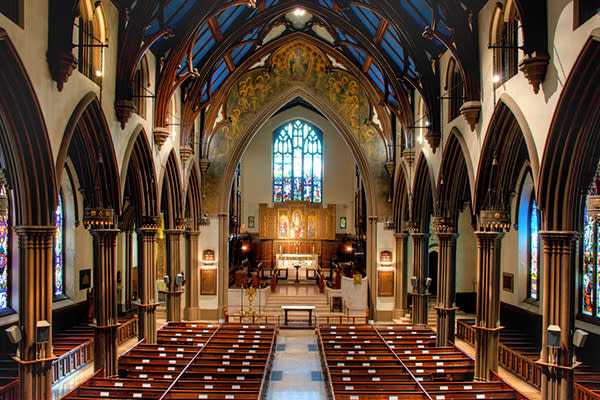This program features, and is inspired by, a piece which won Lux’s 2021 Composition Contest: Cole Reyes’s Alleluia (The Rose). For Reyes, the Latin and English in the text symbolize the old and the new interacting together, which was particularly poignant at the time he wrote the piece, as we all celebrated important holidays and other milestones at home, with or sometimes without family. Many people and organizations, especially in the choral world, still feel the ripples—both positive and negative—of this forced re-examining of traditions.
In this concert, we build on Reyes’s interweaving of old and new traditions, beginning with Cecilia McDowall’s Give Me Some Music, a piece which places puirt à beul, a Gaelic form of “mouth-music” traditionally used to accompany dancing, into a new musical context. Hyo-Won Woo’s O magnum mysterium treats a classic text with a fresh musical setting, while Paul Mealor’s Te lucis ante terminum adds onto that idea, combining both a known text and its associated chant melody with new and unexpected harmonies. Andrea Gabrieli’s Quem vidistis, pastores? puts a different perspective on the shifting of traditions: The composer’s friendship with Orlando di Lasso influenced him to blend Lasso’s Franco-Flemish style with the sensibilities of the new and emerging Venetian School, becoming an integral part of the development and eventual prominence of this new musical tradition. Similarly, Max Reger’s “Nachtlied,” from his Acht Geistliche Gesängen, has close musical ties to Bach's chorales. We close with the piece that inspired the conceptual thread weaved throughout our program: Reyes’s Alleluia (The Rose)—a piece which we've had the joy of including in our repertoire since premiering it.
In this concert, we build on Reyes’s interweaving of old and new traditions, beginning with Cecilia McDowall’s Give Me Some Music, a piece which places puirt à beul, a Gaelic form of “mouth-music” traditionally used to accompany dancing, into a new musical context. Hyo-Won Woo’s O magnum mysterium treats a classic text with a fresh musical setting, while Paul Mealor’s Te lucis ante terminum adds onto that idea, combining both a known text and its associated chant melody with new and unexpected harmonies. Andrea Gabrieli’s Quem vidistis, pastores? puts a different perspective on the shifting of traditions: The composer’s friendship with Orlando di Lasso influenced him to blend Lasso’s Franco-Flemish style with the sensibilities of the new and emerging Venetian School, becoming an integral part of the development and eventual prominence of this new musical tradition. Similarly, Max Reger’s “Nachtlied,” from his Acht Geistliche Gesängen, has close musical ties to Bach's chorales. We close with the piece that inspired the conceptual thread weaved throughout our program: Reyes’s Alleluia (The Rose)—a piece which we've had the joy of including in our repertoire since premiering it.

